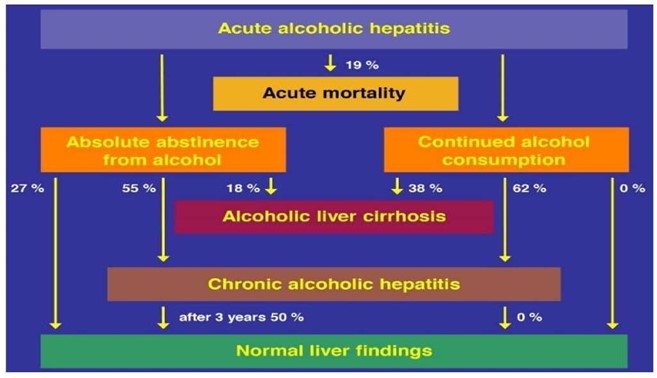A nurse is reviewing a client's medical record before administering acetaminophen 650 mg PO every 6 hr.
Which of the following findings indicates a need for the nurse to notify the provider?
Hypothyroidism.
History of alcohol use disorder.
Recurrent headaches.
BP 92/60 mm Hg.
The Correct Answer is B
 Acetaminophen is metabolized by the liver and can cause liver damage when taken in large doses or for a prolonged period of time.
Acetaminophen is metabolized by the liver and can cause liver damage when taken in large doses or for a prolonged period of time.
Someone with an alcohol use disorder may already have a compromised liver, and combining acetaminophen with more alcohol can worsen the risk of irreparable damage.
Choice A is wrong because Hypothyroidism, is not a contraindication for acetaminophen use.
Choice C is wrong because Recurrent headaches, is not a contraindication for acetaminophen use.
Choice D is wrong because BP 92/60 mm Hg, is not a contraindication for acetaminophen use.
Nursing Test Bank
Naxlex Comprehensive Predictor Exams
Related Questions
Correct Answer is A
Explanation
The nurse should administer the medication over 2 hr because amphotericin B lipid complex should be infused slowly intravenously.
Choice B is wrong because priming the tubing with 0.9% sodium chloride is not mentioned as a necessary action when administering amphotericin B lipid complex via intermittent IV bolus.
Choice C is wrong because discarding the medication if it is yellow is not mentioned as a necessary action when administering amphotericin B lipid complex via intermittent IV bolus.
Choice D is wrong because a gravity flow set is not mentioned as a necessary action when administering amphotericin B lipid complex via intermittent IV bolus.
Correct Answer is C
Explanation
The correct answer is Choice C.
Choice A rationale:
- This response is not appropriate because it is judgmental and may make the client feel defensive.
- It is important for the nurse to respect the client's right to make their own decisions about their health care.
- Telling the client what they should do can undermine their autonomy and potentially damage the nurse-client relationship.
- It's crucial for the nurse to remain objective and avoid imposing their personal opinions or beliefs onto the client.
Choice B rationale:
- This response is also not appropriate because it is using scare tactics to try to persuade the client to get the vaccine.
- This approach can be counterproductive and may further alienate the client.
- It's important to provide accurate information about the risks and benefits of the vaccine in a neutral and non-threatening manner.
Choice C rationale:
- This is the most appropriate response because it acknowledges the client's right to refuse the vaccine while still encouraging them to get it.
- It also demonstrates respect for the client's autonomy and validates their feelings.
- This approach is more likely to foster a positive nurse-client relationship and keep the door open for future discussions about vaccination.
Choice D rationale:
- This response is not accurate because the influenza vaccine is not mandatory for all clients before discharge.
- It is important for the nurse to provide accurate information to the client.
- Threatening the client with an against medical advice form is not appropriate and may be considered a form of coercion.
Whether you are a student looking to ace your exams or a practicing nurse seeking to enhance your expertise , our nursing education contents will empower you with the confidence and competence to make a difference in the lives of patients and become a respected leader in the healthcare field.
Visit Naxlex, invest in your future and unlock endless possibilities with our unparalleled nursing education contents today
Report Wrong Answer on the Current Question
Do you disagree with the answer? If yes, what is your expected answer? Explain.
Kindly be descriptive with the issue you are facing.
